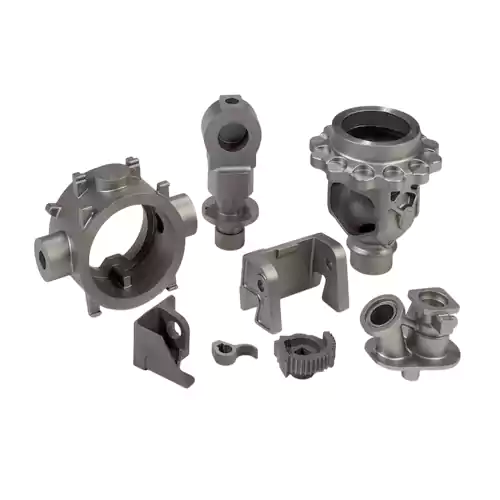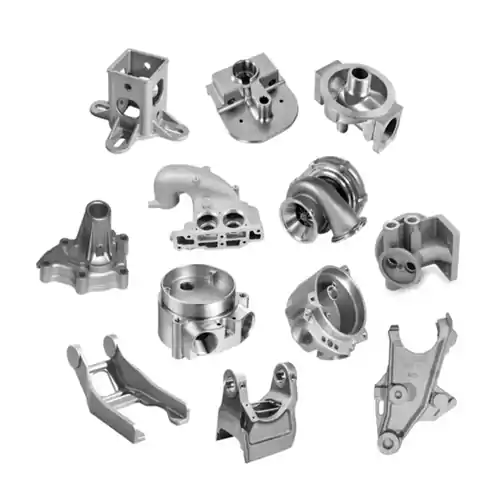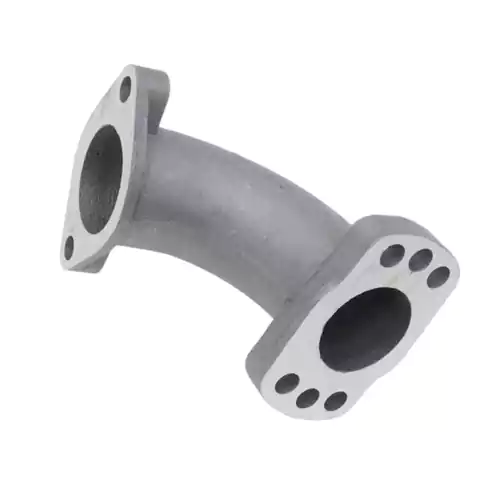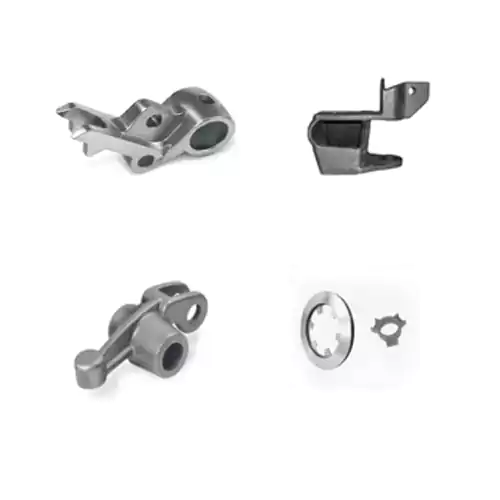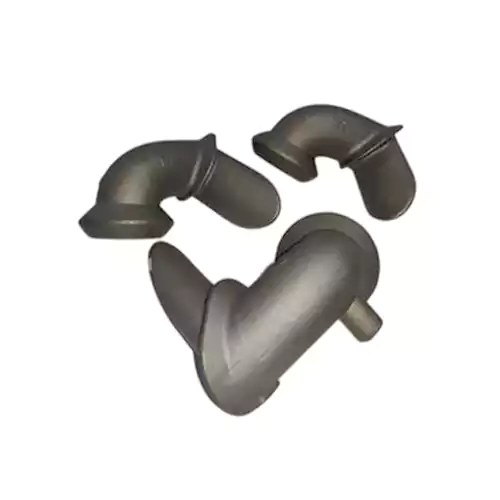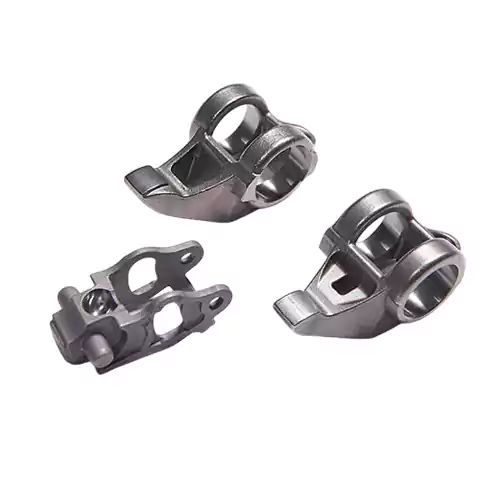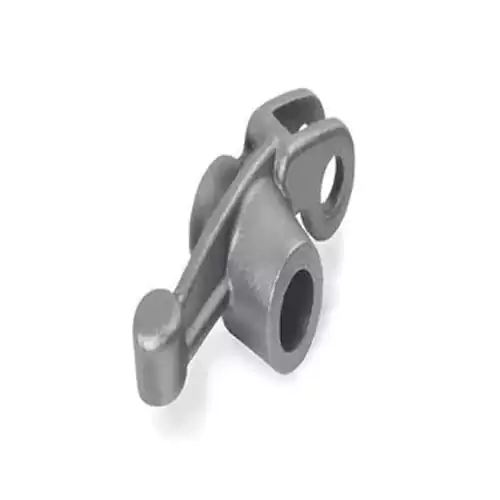- Certified ISO 9001 : 2015
- Download Catalogue
- Unit No. 327, Pride Industrial Estate,
Near Waliv Phata, Sativali Road, Vasai East,
Tal : Vasai, Dist. Palghar-401208, Maharashtra, India
- +91 9326474970
- enquiry@supercastind.com
Supercast International specializes in the machining of high precision investment casting products. The company operates with a unique infrastructure equipped with advanced machinery and comprehensive testing facilities to provide precise casting products. Expertise lies in producing top-quality precision investment castings using variety of metals,alloys and superalloys. A dedicated and skilled workforce, coupled with a commitment to excellence, has earned the company a good reputation
Product Details:
Investment casting, often referred to as lost-wax casting, is a sophisticated manufacturing technique that excels in producing complex metal components with exceptional precision, particularly in the sector of automotive parts. The process begins with the creation of a wax model that accurately represents the desired automotive component, such as intricate engine parts or lightweight structural elements. This wax model is then coated in a ceramic material to form a robust mold. Once the ceramic shell has solidified, the wax is melted and emptied away, leaving an empty chamber that reflects the original form of the model. This method is particularly beneficial for automotive applications, as it allows for the production of complex geometries and fine details that are essential for high performance parts.
Following the removal of the wax, molten metal is poured into the ceramic mold, ensuring that every intricate detail is captured in the process of investment casting for automotive parts. As the metal cools, it solidifies and once fully cooled, the ceramic shell is broken away to reveal the finished automotive part. The investment casting process for automotive parts involves several critical steps such as master pattern creation, wax pattern production, ceramic shell formation, wax removal, metal pouring, cooling and post-processing. Each of these stages is vital for ensuring that the final product meets the stringent quality standards required in the automotive industry.
The process of investment casting for automotive parts is such an adaptable process that it easily handles a wide range of ferrous and non-ferrous metals which enhances its applicability across various automotive applications. The perfection achieved through this method significantly reduces the need for extensive machining and finishing, thereby streamlining production and minimizing material waste. This efficiency is particularly valuable in the automotive sector, where components must meet specific performance criteria under demanding conditions. Furthermore, investment casting for automotive parts allows for the creation of lightweight designs that do not compromise on durability, a characteristic that is increasingly important as manufacturers strive to enhance fuel efficiency and reduce emissions in vehicles.
1.Wax Model Creation: The investment casting process for automotive parts begins with crafting a precise wax model that accurately represents the desired component to be produced.
2.Ceramic Shell Formation: The wax model is coated with a ceramic material, forming a durable mold that can withstand the pouring of molten metal, essential for investment casting in automotive applications.
3.Wax Removal: After the ceramic shell hardens, the wax is melted and drained away, leaving a hollow cavity that mirrors the original shape of the model, a critical step in investment for automotive parts.
4.Metal Pouring: Molten metal is poured into the ceramic mold, ensuring that every intricate detail of the cavity is filled for optimal component accuracy in investment casting for automotive parts.
5.Cooling and Solidification: The metal cools and solidifies within the mold, taking on the precise shape and features of the original wax pattern, which is vital in the said process.
6.Shell Removal: Once the metal has cooled, the ceramic shell is broken away to reveal the finished automotive part, ready for further processing in the investment casting workflow.
7.Post-Processing: The final component undergoes finishing operations to achieve the desired surface quality and tolerances, ensuring it meets industry standards for investment casting in automotive parts.
8.Material Versatility: Investment casting for automotive parts allows for the use of various metals, including both ferrous and non-ferrous alloys, enhancing its application across different automotive components.
9.Precision and Efficiency: This method minimizes material waste and reduces the need for extensive machining, streamlining production processes in investment casting for automotive parts.
10.Durability and Performance: Components produced through investment casting for automotive parts are known for their strength and durability, making them suitable for demanding automotive applications.
Application Industries
1.Automotive Manufacturing
2.Electric Vehicle Production
3.Motorsports and Racing
4.Heavy Duty Vehicle Manufacturing
5.Agricultural Equipment Production
6.Construction Machinery Manufacturing
7.Aerospace and Defense
8.Railway and Locomotive Manufacturing
9.Marine Vehicle Production
10.Specialized Custom Vehicle Fabrication
Investment casting is a valuable manufacturing process in the automotive industry due to its ability to produce complex, high-precision, and durable components. Parts like engine components, suspension parts, turbocharger components, and brake systems benefit from the high accuracy, material versatility, and surface finishes offered by investment casting. This method helps automotive manufacturers meet performance, safety, and efficiency standards while also achieving cost-effective production.
